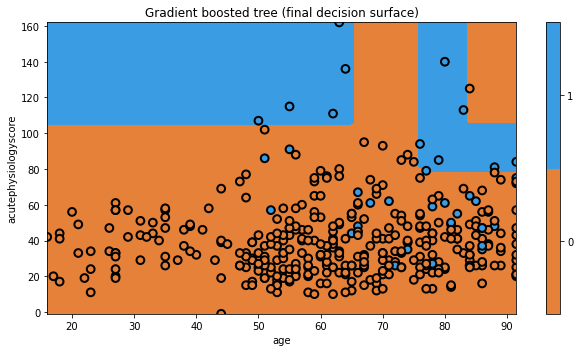Gradient boosting
Overview
Teaching: 20 min
Exercises: 10 minQuestions
What is the state of the art in tree models?
Objectives
Train gradient boosted models.
Visualise the decision boundaries.
Gradient boosting
Last, but not least, we move on to gradient boosting. Gradient boosting, our last topic, elegantly combines concepts from the previous methods. As a “boosting” method, gradient boosting involves iteratively building trees, aiming to improve upon misclassifications of the previous tree. Gradient boosting also borrows the concept of sub-sampling the variables (just like Random Forests), which can help to prevent overfitting.
While it is too much to express in this tutorial, the biggest innovation in gradient boosting is that it provides a unifying mathematical framework for boosting models. The approach explicitly casts the problem of building a tree as an optimization problem, defining mathematical functions for how well a tree is performing (which we had before) and how complex a tree is. In this light, one can actually treat AdaBoost as a “special case” of gradient boosting, where the loss function is chosen to be the exponential loss.
Let’s build a gradient boosting model.
np.random.seed(321)
mdl = ensemble.GradientBoostingClassifier(n_estimators=10)
mdl = mdl.fit(x_train.values, y_train.values)
plt.figure(figsize=[9,5])
txt = 'Gradient boosted tree (final decision surface)'
glowyr.plot_model_pred_2d(mdl, x_train, y_train, title=txt)

Key Points
As a “boosting” method, gradient boosting involves iteratively building trees, aiming to improve upon misclassifications of the previous tree.
Gradient boosting also borrows the concept of sub-sampling the variables (just like Random Forests), which can help to prevent overfitting.
The performance gains come at the cost of interpretability.